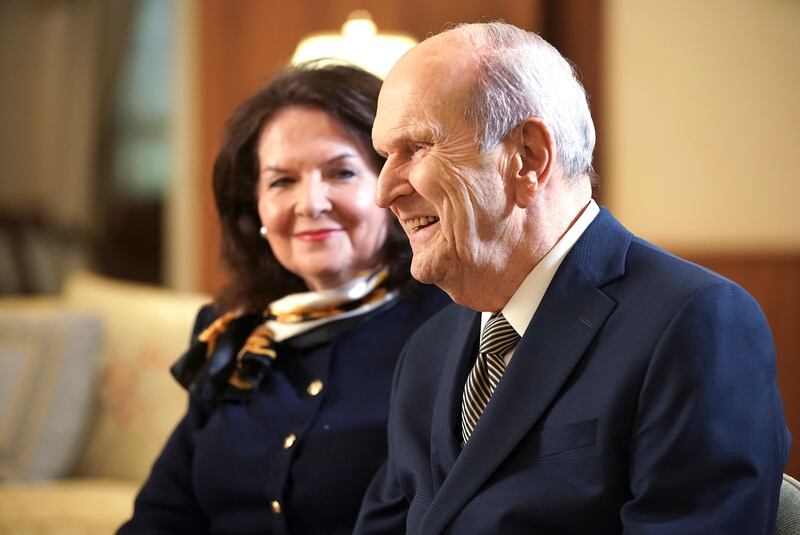On Wednesday, The Atlantic published perhaps the most consequential magazine-length feature on The Church of Jesus Christ of Latter-day Saints in more than a decade.
Political journalist McKay Coppins, a Latter-day Saint himself, was granted rare on-the-record access to senior church leaders, including President Russell M. Nelson. (You can read the full article here).
Drawing on both original reporting and Coppins’ own experiences in the faith, the article will undoubtedly provoke a variety of reactions. But, apart from how readers feel about the substance of the piece, The Atlantic deserves credit for its process in approaching the subject matter.
As the church emerged into the public consciousness after the 2002 Salt Lake Winter Olympics and, a decade later, Mitt Romney’s presidential bid and Broadway’s “The Book of Mormon Musical,” long-form treatments of the faith have trended toward three distinct genres.
First, there is the non-Latter-day Saint journalist who looks at the faith warily (see, for example, the New Yorker in 2002, Harper’s in 2011 and Bloomberg Businessweek in 2012). The authors of these kinds of essays typically mean well, but because they lack subject matter expertise, the essays usually end up accentuating elements of the faith that don’t feel authentic or relevant to those who actually sit in the pews and live the religion week after week.
Second, there are the pieces written by former or lapsed members of the church who revisit their past faith with equal parts exoticism and redemptive nostalgia (see Walter Kirn’s essays in The New Republic and Newsweek, or, even more recently, Tara Westover’s book “Educated” and Elna Baker’s “The New York Regional Mormon Singles Halloween Dance.”)
These efforts exhibit far fewer unforced errors (the writers once knew the faith intimately after all) but they stumble in fully conveying the faith’s contemporary rhythm and pulse. They rely too heavily on memory without the counterbalancing insights of the present.
Then, lastly, there’s the genre in which active church members examine their faith. Too often, however, Latter-day Saint writers take special pains to demonstrate just how objective they are in a well-intentioned but ultimately gauche bid to convince readers that they’re playing it straight. The tragedy of this kind of performative objectivity is that it usually steers clear of the very texture and personal vulnerability that might actually lend relevant insight into what animates the faith tradition.
Maybe the most striking example of this would include the 2005 Newsweek article marking the 200th anniversary of Joseph Smith’s birth, or perhaps in the realm of popular history, Benjamin Park’s recent “Kingdom of Nauvoo.”
But what stands out about The Atlantic’s latest 9,000-word treatment, which caps the bicentennial year of Joseph Smith’s First Vision, is how it paves a decidedly different (and dare I say better) path forward for writing about the faith.
The Atlantic recruited a church member and a serious journalist to write the piece, but the publication didn’t tie the author’s hands.
According to Coppins, who I spoke with intermittently throughout his writing process, The Atlantic not only permitted him to be candid regarding living his religion, but the editors were actually a driving force behind encouraging him to include vignettes about it throughout the essay.
Coppins told me that when The Atlantic’s editor Jeffrey Goldberg flew out to Salt Lake City to personally pitch President Russell M. Nelson on participating in the article, Goldberg conveyed to the prophet that the publication wouldn’t shy away from tensions or facts, but he said The Atlantic would be fair in its approach.
Readers will now get to decide for themselves whether they delivered.
Hal Boyd is an associate professor of family law and policy at Brigham Young University’s School of Family Life and a fellow of the Wheatley Institution. His views are his own.


